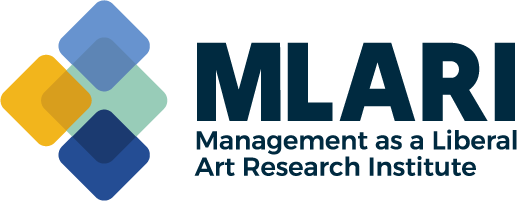Foundations of CSR: Truly Sustainable
PUBLISHED:
I had thought that the concept of Corporate Social Responsibility (CSR) was a fairly recent development based on my experience in business and business education. Though two social reformers did not use the term CSR, their actions showed that all stakeholders are responsible for making a positive impact on society. My familiarity with the work of management and social theorist Peter Drucker, who actively published from 1939 to 2005, led me to the conclusion that organizations have a vital role in society. While Drucker may not have used the term CSR, he certainly advocated much of what encompasses this concept. Drucker’s work includes references to the need for social responsibility in business (Drucker and Maciariello, 2008).
While recently sitting in a church service, I listened to a recitation of the work of the English theologian John Wesley, who died in the year 1791. Wesley was a social reformer with striking similarities to Drucker. That experience motivated me to look more into the parallels between Wesley and Drucker, and to see the connections of both men’s thoughts to what we now term Corporate Social Responsibility. It seems that this concept is perhaps far older than I thought, showing the sustainability of this idea.
A Definition and Use of Corporate Social Responsibility
Corporate Social Responsibility can be defined as follows:
Corporate social responsibility (CSR) is a business practice that involves integrating social, ethical, and environmental concerns into a company's operations. CSR can also be defined as a company's commitment to respecting the interests of its stakeholders (Google Search, 1-27-25).
Examples of CSR include ethical leadership and management techniques, environmental involvement, and being fiscally sound and transparent within reason. It is evident that consumers value CSR activities such as limiting carbon footprint and supporting environmentally friendly fabrication solutions. Lately, some have been selecting products based on that business’ social platform. Society has shown through consumer choice and social media that CSR inspired behaviors are preferred. Many consider CSR as a 21st century concept, but let’s see how earlier social theorists articulated this concept – one in an era before corporations existed.
John Wesley (1703-1791)
John Wesley, the ‘Founder and Father of Methodism,’ was a priest for the Church of England who later left this denomination to start his own (GCAH, 2025). In 1727, Wesley was given a fellowship at Lincoln College (Vickers, 2003). Westley became a failed missionary in 1735 and three years later began to speak out against predestination doctrine, arguing that grace and redemption were available to all. He began journaling and sharing his evangelical works through ‘field preaching’ (GCAH, 2025; Vickers, 2003). These actions led to speaking out against corruption in the churches of the day and the need for social reform, including abolition of slavery (Vickers, 2003).
According to GCAH (2025), he established Methodist Societies and created their charter in 1784. The Methodists continued based on his writings. Murray Norris (2017) concludes that followers of John Wesley did not separate work life from personal religious development. Wesleyans included charitable donations of volunteerism and finances, high work ethic, and greater outreach as part of their religious outpouring. This early form of social responsibility stemmed from Wesley’s work on economics, politics, and social issues such as workplace safety, prison reform, and education (Nutt & Wilson, 2010; Lunn, 2010).
Lunn (2010) states that Wesley was focused on the well-being of the individual worker. Instead of relying on organizations to change society, he supported individuals who were champions of social improvements. Wesley grounded his work in the theology that each person is made in God’s image. Even though the majority of the work was for and with individuals, Stranger’s Friend Societies and some private entities supported Wesley’s efforts to equalize the status of individuals regardless of social class (Murray Norris, 2017; Lunn, 2010).
Peter Drucker (1909-2005)
Peter Drucker, often called the Father of Management, was primarily interested in society, communities within society, and polity according to A Functioning Society published in 2003. Drucker (2003) posits that management is a knowledge-based social function that influences society and economy (p.11). His first book involving corporations was Concepts of Corporation in 1946 though he did not use the phrase Corporate Social Responsibility (Drucker, 2003).
Drucker was raised in Austria and went to Germany for both work and education (2003). He was introduced to the issues of a totalitarian dictatorship when Hitler came to power. Drucker worked for a newspaper in Frankfurt at the time and faced first-hand the censorship of the Nazi party. His experiences brought forth the book The End of Economic Man (1938-1939) and later The Future of Industrial Man (1942). Peter Drucker saw that “social institutions” were “power centers within industrial society” (Drucker, 2003, p.11).
Later, Drucker focused on the influence management has on the individual worker as well as on individuals themselves. Unlike Wesley, Drucker supported social change through and with organizations in balance with individuals. Concepts he created teach managers to be people-oriented instead of task-oriented and to consider investment in workers to be a pillar of good business. He found that many organizations had the primary drive of financial stability. Though a business must be stable monetarily to be a functioning organization, it is not the only pillar of ‘good business.’ Rao (2021) reminds us that Drucker posits that “people are our greatest asset” (p.6). Time must be spent on investing in employee development. Another example of how Drucker viewed the balance between society/organizations and the individual is the concept of status and function, a term he learned combing the library in Hamburg, Germany at the age of 18 (Drucker, 2003).
Status and function is defined by Drucker in terms of how an individual fits within a social group and what that person’s purpose is independent of any social labels or groupings (Drucker, 1942). This is because status defines where an individual fits within the group as an in-group or out-group member and the role given to that person. Function is how an individual sees themselves with respect to life’s purpose and whether the purpose of society fits within a person’s individual viewpoint. There is a symbiotic relationship between status and function (Drucker, 2003). Status and function can be self-defined or group-generated and is tied to social responsibility and discussed above as CSR.
Drucker's emphasis on integrity, social responsibility, and ethical behavior ties leadership decisions and actions in these areas to an organization’s sustainability. Drucker points out the need for sustainability in Managing the Non-Profit Organization and the necessity to balance mission, vision, financial stability, resources and marketing (Drucker 1990). One can conclude that these are of equal importance to a for-profit organization as well.
Connections between Wesley and Drucker Related to CSR
Wesley focused on “slavery, economics and ethics, his work on aid to the poor, prison reform, and education beyond his scriptural teachings” (Lunn, 2010). Drucker held that individuals and organizations needed to lead the standards of society. These two activists spoke to the issues of the time, and people paid attention. Average people began considering the strategies suggested to alleviate concerns, prevent future negatively impacting events, and create better work environments. These gurus of social responsibility pointed out deficits, gave direction, and inspired others. We stakeholders of today’s society need to continue this work.
Uses for CSR Today
As we continue to shift from the industrial age to knowledge-based work and work in the service industries, we need to maintain balanced organizations that consider social problems in similar regard as they do business issues. Activities that have been categorized with CSR include organizational ethics, environmental issues, philanthropy, ethical responsibility, charitable global giving, community engagement, economic responsibility, and healthy workplace culture (IBM, 2023). I can see connections between these categories and both Drucker and Wesley. Through similar methods, these social reformers created a sustainable societal norm that created a better environment for individuals in the workplace and society as a whole. We need to maintain these ideals by fostering differences in management and organizational climate and culture. Currently, CSR has been associated with job satisfaction, high performance, and employee trust within organizations that are engaged in social responsibility activities (Brieger, 2019). The benefits of CSR go beyond creating equitable workspace.
How do we keep these positive behaviors in the forefront of future organizations and constituents?
Sustainability
Wesley focused on making safe and ethical workplace conditions a priority. Drucker posits that organizations must measure how well they create and maintain work cultures that support the needs of all stakeholders, status and function, financial stability, innovation, and environmental impact.
Organizations that create and maintain a focus on CSR topics such as healthy workplace and environmental issues promote a better society while keeping clientele who share the same interests and concerns. This concept of social responsibility goes far beyond corporations. It lends to sustainable organizations.
My question is, who will make sure these concepts are carried into the future?
We will.
References
Brieger, S. A. (2019). Too Much of a Good Thing? On the Relationship Between CSR and Employee Work Addiction. Journal of Business Ethics. Springer Nature B.V.
Drucker, P. (2003). A Functioning Society. Transaction Publishers
Drucker, P. (1990, 2010). Managing the Non-Profit Organization. Harper-Collins, e-books.
Drucker, P. (1942). The future of industrial man. Translation Publishers
GCAH, Jan 2025. General Commission on Archives & History: John Westley.
https://gcah.org/biographies/john-wesley/
Google Search (Jan, 2025). Definition of Corporate Social Responsibility
IBM, Dec 2023. What is Corporate Social Responsibility (CSR)? Found at https://www.ibm.com/think/topics/corporate-social- responsibility#:~:text=Corporate%20social%20responsibility%20is%20the,impact%20is %20measured%20or%20quantified.
Murray Norris, C. (2017). Chapter 9 Education, Welfare, and Missions. Oxford Academic. https://doi.org/10.1093/acprof:oso/9780198796411.003.0010
Nutt, P.C. & Wilson, D. C. (2010). Handbook of decision making. Wiley-Blackwell
Lunn, J. (2010). Religion & Liberty: John Wesley's Social Ethic. 3.6. Action University.
Rao, M.S. (2021). Peter Drucker’s Principles, Philosophies, and Practices. The Journal of Values-Based Leadership. 14.2.
Swaminathan, S. (2009). Wesley, John (1703–1791), Methodism, and Social Reform. 1-2. Wiley. https://doi.org/10.1002/9781405198073.wbierp1559
Vickers, J. A. (2003). John Wesley at 300. Historian, (79), 28-33. https://2q21e1s6o-mp01-y- https-www-proquest-com.proxy.lirn.net/scholarly-journals/john-wesley-at-300/docview/275037337/se-2





